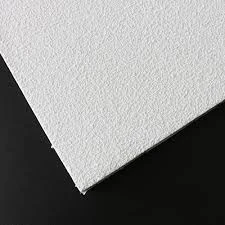- Afrikaans
- Albanian
- Amharic
- Arabic
- Armenian
- Azerbaijani
- Basque
- Belarusian
- Bengali
- Bosnian
- Bulgarian
- Catalan
- Cebuano
- Corsican
- Croatian
- Czech
- Danish
- Dutch
- English
- Esperanto
- Estonian
- French
- German
- Greek
- Hindi
- Indonesian
- irish
- Italian
- Japanese
- Korean
- Lao
- Malay
- Myanmar
- Norwegian
- Norwegian
- Polish
- Portuguese
- Romanian
- Russian
- Serbian
- Spanish
- Swedish
- Thai
- Turkish
- Ukrainian
- Uzbek
- Vietnamese
نوفمبر . 05, 2024 16:49 Back to list
ceiling access panel requirements
Requirements for Ceiling Access Panels A Comprehensive Overview
Ceiling access panels are essential components in various construction and renovation projects, serving as crucial access points to hidden spaces in ceilings. These panels provide entry to mechanical, electrical, plumbing (MEP) systems, ensuring that maintenance and repair work can be conducted with minimal disruption. Understanding the requirements for ceiling access panels is vital for architects, builders, and facility managers to ensure compliance with safety standards while maximizing functionality.
Design and Material Considerations
When selecting ceiling access panels, one of the primary considerations is the design and material used. Access panels come in various sizes and configurations, designed to fit seamlessly into the ceiling structure. Common materials include galvanized steel, aluminum, and plastic, each offering distinct advantages. For instance, galvanized steel is robust and fire-resistant, making it suitable for environments requiring enhanced durability and safety. In contrast, lightweight materials like plastic may be more appropriate for residential applications where weight and ease of installation are paramount.
The design should also account for the specific environment in which the panel will be installed. For locations exposed to moisture, such as bathrooms or kitchens, water-resistant panels are recommended. In contrast, areas with exposure to chemicals may require panels specifically rated for chemical resistance. Additionally, the panel should incorporate appropriate insulation and soundproofing materials where necessary, especially in commercial settings where noise reduction is crucial.
Compliance with Building Codes
Ceiling access panels must adhere to local building codes and regulations, which can vary significantly across regions. It is imperative to consult relevant building codes during the design and installation phases. These codes often specify requirements related to fire safety, structural integrity, and accessibility. For instance, panels installed in fire-rated ceilings must maintain the fire-resistance rating of the assembly, which may involve specific materials and seals.
ceiling access panel requirements

Moreover, panels must comply with accessibility standards, particularly in public buildings. The Americans with Disabilities Act (ADA) sets forth criteria to ensure that access points can be utilized by individuals with disabilities. This may include considerations for panel height, opening mechanisms, and the ease of use.
Installation and Maintenance
Proper installation is crucial for ensuring that ceiling access panels function effectively while maintaining safety. Panels should be installed in accordance with manufacturer guidelines and industry best practices. Incorrect installation can lead to issues such as misalignment, which may compromise access or create safety hazards.
Regular maintenance is also essential to ensure longevity and reliability. Facility managers should implement inspection routines to check for signs of wear, damage, or misalignment. Additionally, it is important to keep access points unobstructed to allow for swift entry when maintenance is needed. A well-maintained access panel not only promotes safety but also enhances the overall efficiency of building operations.
Conclusion
Ceiling access panels play a pivotal role in the functionality and safety of buildings, offering the necessary means for accessing vital systems hidden above the ceilings. When selecting and installing these panels, it is crucial to consider materials, design, compliance with building codes, and maintenance practices. By adhering to these requirements, architects, builders, and facility managers can ensure that access panels serve their intended purpose effectively while contributing to the overall safety and efficiency of the building. Proper attention to ceiling access panel requirements enhances functionality and fosters a safer work and living environment.
-
Transform Interiors with PVC Gypsum Ceiling: A Stylish, Durable, and Moisture-Resistant SolutionNewsMay.19,2025
-
The Smart Interior Upgrade: Discover the Durability and Versatility of Gypsum Ceiling Access Panel SolutionsNewsMay.19,2025
-
The Smart Choice for Interior Design: Discover the Value of PVC Gypsum Ceiling SolutionsNewsMay.19,2025
-
Mineral Fiber Ceiling Tiles: The Smart Blend of Performance and AestheticsNewsMay.19,2025
-
Mineral Fiber Ceiling Tiles: The Superior Choice Over Gypsum for Sound and Fire SafetyNewsMay.19,2025
-
Mineral Fiber Ceiling Tiles: Eco-Friendly Strength and Style for Every CeilingNewsMay.19,2025







